Don't wanna be here? Send us removal request.
Photo

Differences Between Communist and Social-Democratic Views on Women's Rights
The main difference between the communist and social-democratic views on women’s rights was not about the end goal, which was to liberate women from both material and moral authority and to create better living conditions for them. Both sides wanted the same ultimate goal, but they had different ideas on how to achieve it.
Different Methods of Achieving the Goal
Julia Sultanova, a key figure, explained the split between the two groups in the newspaper Blagodenstvie (Prosperity). She wrote that the communist women’s union believed in the idea of destroying the existing system and building a new life from its ruins. In contrast, the social-democratic women’s organizations wanted to transform society consciously by improving the current system and sharing its benefits with everyone Bulgaria Holidays.
Social-Democratic Women’s Union in 1922
In 1922, the Women’s Social-Democratic Union had 26 local groups and about 1,000 members from various backgrounds. Half of the members were housewives, a quarter were workers, and the rest were teachers, employees, craftswomen, saleswomen, and some doctors and pharmacists. One of the main goals of this union was to oppose both the communist women’s union and the bourgeois women’s union.
Advocating for Women’s Rights
The union’s newspapers, Blagodenstvie and later Nedovolnata (Unsatisfied), supported women’s civic and political rights. They believed that achieving these rights was crucial for the larger social-democratic goal of human liberation and global prosperity. They also insisted on equal pay for equal work, better health and hygiene measures, government support for the unemployed and poor, and good education and cultural facilities for everyone in Bulgaria.
The social-democrats were against some parts of the Civil Code and wanted to protect children and abolish prostitution.
Similar Goals to the “Bourgeois” Women’s Union
Although the social-democratic women’s group tried to separate themselves from the “separatist feminist organization”, it was clear that their goals and priorities were quite similar to those of the “bourgeois” Bulgarian Women’s Union.
0 notes
Photo

Old Roads of Albania
The Turks had done nothing to improve the roads in Albania. They were just the way Nature and the Romans had left them. At one point, we came to a sharp drop between black rocks. The winding path had been used for hundreds of years, so much that a deep channel had been worn into the rock, which was knee-deep when walking. Even though the area was full of rough rocks, it would have been impossible to get lost, because the path had been clearly marked by the feet of many generations of travelers.
The Skumbi River and Roman Bridges
This path led us down into the valley where the muddy Skumbi River flowed, making its way toward the Adriatic Sea. The path also led to a Roman bridge, well-arched and still standing strong, just as it was when the Romans built it. I saw many Roman bridges throughout Albania. Some were still in use, while others were falling apart, with pieces of the bridge washed away in the river. Some were broken in half. But not once did I see a bridge that the Turks had repaired. Large sections of old bridges still stretched over rivers, looking like they were waiting for repairs. Fixing them wouldn’t have cost much, and it would have saved people from having to go far out of their way to find another place to cross Istanbul Daily Tour.
The Broken Roads
I didn’t see any roads that worked well for connecting towns. Instead, I saw roads that were useless. Between the Skumbi bridge and Elbasan, the land was mostly flat. Here, I saw signs of poor efforts to build a good road. The authorities told the people in the area that they had to work for four days each year to build a road from Elbasan to Struga. But at the rate they were going, it would take 4,000 years to finish, and even then, it wouldn’t be a good road.
I saw some of this road-building in action, but it was only in places that were easy to travel through. The ground was smooth and level, but a little rain would make the road turn into mud. In other places, the people hadn’t done their four days of work, and no vehicle could travel through. Occasionally, there was a stretch of road that the government had worked on, with piles of earth like a railroad embankment and stone culverts that weren’t needed. These culverts were meant to let small streams pass through, but they were unnecessary because the streams were so small you could jump over them when they were flowing, and now they were dry.
0 notes
Photo

Arrival at Dolan
We continued through the burning heat until we were almost too tired to continue. Finally, we reached the Turkish village of Dolan. The women there were covered in black cloaks. Even those working in the fields turned away as we passed, holding their cloaks to hide their faces, but watching us from the corner of their eyes.
Visiting the Head-Man’s Home
We were exhausted and got off our horses. The village leader, dressed in a blue vest, brown pants, a red cummerbund, and a dirty white turban, greeted me. He invited me to visit his humble home. His house was made of unbaked bricks, with a hard earth floor. There was nothing to sit on except a mat made of rushes. For lunch, we had rice and coffee Socialist Museum.
The Village Men’s Curiosity
All the men from the village gathered around and sat down in the sun, watching us quietly. They didn’t push to crowd around the door or peek through the windows. They were curious but respectful. When I went outside, they stood up and bowed to me. The head-man made a small speech, and I shook his hand. I told him, through my dragoman, that shaking hands was the English way to show friendship. He seemed pleased. I offered him a cigarette, and he was even more pleased. I was about to offer cigarettes to the twenty men standing around, but my dragoman stopped me. He said it was important to keep the head-man’s dignity, so he would hand out the cigarettes to the others.
Journey to Sileohlu
We continued our journey through the hot, dry land. The heat was heavy and made us feel sleepy. A soldier from Kirk Kilise had shown us the way to Dolan, and there he left us, giving us a new guide to take us to Sileohlu. We rode in a single line along a weak, dusty path. The land around us was completely barren and desolate.
0 notes
Photo

The Quiet Relics of Bulgaria's Past
The Church of the Forty Martyrs
Like many places, Bulgaria has quiet reminders of its noble past in the form of old churches. Walking down a rocky hillside, I arrived at the Church of the Forty Martyrs. It has a low roof, a dim, vault-like interior, but it is very strong. This church was built by King John Osen in 1330. In 1389, the Turks turned it into a mosque, and Christians couldn’t worship there again until 1877. Only part of the original building remains. Some of the granite pillars are from different periods: one came from a Roman temple, and another is clearly Greek. The Christians used pieces from earlier buildings. I looked through books of prayers written in ancient Slavic, with pages that were thin, brown, and crumbling in my hands.
The Metropolitan Church
I continued to a nearby church, the Metropolitan Church, which is now mostly forgotten, holding only one service a year. The old woman who took care of the church lost the key, but she suggested breaking the lock. After waiting for nearly an hour and smoking in the shade, the key was found. Inside, the church was dark, and the frescoes of saints had strange, exaggerated faces. The pillars were made of black marble, probably taken from a Greek temple. In a small room, I found old manuscripts hidden behind a crack in the wall—these could be treasures for someone who studies history. The monks’ seats were covered in dust and cobwebs. There were many ikons hanging in the dim light, and large candelabras hung from the ceiling Ancient Bulgaria Tour.
The church felt eerie, silent, and forgotten by most. But I couldn’t help wondering if the spirits of those who once worshipped here, like children and old men, might still visit. For an hour, I had the church to myself. I sat in one of the monk’s seats, and sunlight shone down from a crack in the roof, lighting up the Virgin’s face. It was a peaceful, thoughtful hour.
The Monastery of the Transfiguration
A Bright and Colorful Place
The sun was high in the sky, and the road was dusty as we raced towards the Monastery of the Transfiguration. The path twisted and turned, climbing higher and higher. We left the main road and walked through a cool area filled with tall trees. The quiet was broken by the sound of water dripping. After a while, we arrived at the monastery. It wasn’t like the old, crumbling buildings I had seen before. This monastery was bright and colorful. The grass was a rich green, and the sky was a deep blue. The white walls were covered in bright, colorful pictures, and the roof tiles had a warm, reddish color. Vines grew everywhere, adding to the lively, beautiful atmosphere.
0 notes
Photo
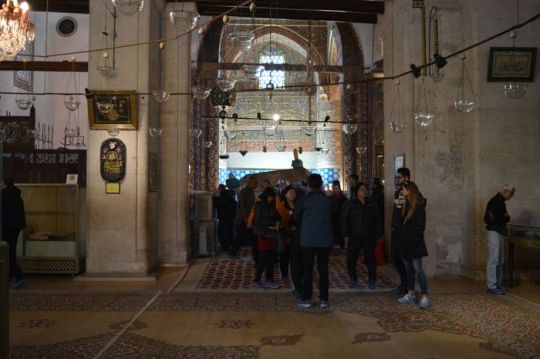
Rising Dissent in Bulgaria: 1981-1982
Concerns Over Polish Events
On 14 October 1981, Bulgarian leader Todor Zhivkov submitted a memorandum to the Politburo, expressing his worries that the unrest happening in Poland could spread to Bulgaria. The State Security Department 2 began to notice an increase in anonymously circulated leaflets and gatherings of young people in private homes who were discussing the events in Poland. A group of these young people planned to create a document called “Declaration-80” to be circulated outside Bulgaria. The authorities classified this effort as a threat to the “rule of law.”
State Security Operations
In response to growing dissent, the State Security launched a major surveillance operation named “Dissidents” targeting creative artists in Sofia, Burgas, Varna, Stara Zagora, Yambol, and other cities. Authorities arrested many individuals on charges related to dissident activities, and some were even sent to psychiatric clinics for evaluation. In 1982, about 45% of the 312 authors of anti-regime leaflets identified by the State Security were young people. During the same period, the State Security recorded 141 incidents reflecting anti-Soviet sentiments among the population Rose Festival Tour.
Increase in Youth Activism
The influence of events in Poland sparked a rise in informal youth groups across Bulgaria. In 1982, there were 64 such groups with a total of 295 participants, compared to only 18 groups with 86 participants in 1980. This significant increase indicates a growing willingness among young people to engage in discussions about political issues and express their dissatisfaction with the regime.
Open Letter to the Vienna Conference
In the autumn of 1986, several former political prisoners penned “An Open Letter of Appeal,” which they sent to the Vienna Conference. This conference was focused on reviewing the implementation of the Helsinki Agreement concerning human rights. Their letter called on esteemed representatives from European countries, the USA, and Canada to ensure that the conference did not conclude without fully guaranteeing the fundamental human rights of all European citizens.
The Message of the Open Letter
The letter stated:
“The Vienna Conference should not conclude its work until the most fundamental human rights of all European peoples are fully guaranteed. Until the day comes when each and every European citizen can freely and without fear of persecution express his/her thoughts, opinions, and convictions in oral or written form.”
The events of 1981-1982 in Bulgaria marked a significant period of rising dissent against the communist regime. As young people became more politically active and began organizing, the government responded with surveillance and repression. The call for human rights, highlighted in the Open Letter, reflected a growing determination among citizens to demand freedom of expression and protection from persecution. These developments set the stage for future movements that would challenge the regime and ultimately contribute to the fall of communism in Eastern Europe.
0 notes
Photo
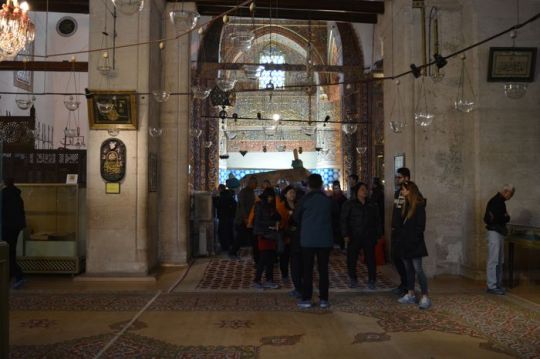
Rising Dissent in Bulgaria: 1981-1982
Concerns Over Polish Events
On 14 October 1981, Bulgarian leader Todor Zhivkov submitted a memorandum to the Politburo, expressing his worries that the unrest happening in Poland could spread to Bulgaria. The State Security Department 2 began to notice an increase in anonymously circulated leaflets and gatherings of young people in private homes who were discussing the events in Poland. A group of these young people planned to create a document called “Declaration-80” to be circulated outside Bulgaria. The authorities classified this effort as a threat to the “rule of law.”
State Security Operations
In response to growing dissent, the State Security launched a major surveillance operation named “Dissidents” targeting creative artists in Sofia, Burgas, Varna, Stara Zagora, Yambol, and other cities. Authorities arrested many individuals on charges related to dissident activities, and some were even sent to psychiatric clinics for evaluation. In 1982, about 45% of the 312 authors of anti-regime leaflets identified by the State Security were young people. During the same period, the State Security recorded 141 incidents reflecting anti-Soviet sentiments among the population Rose Festival Tour.
Increase in Youth Activism
The influence of events in Poland sparked a rise in informal youth groups across Bulgaria. In 1982, there were 64 such groups with a total of 295 participants, compared to only 18 groups with 86 participants in 1980. This significant increase indicates a growing willingness among young people to engage in discussions about political issues and express their dissatisfaction with the regime.
Open Letter to the Vienna Conference
In the autumn of 1986, several former political prisoners penned “An Open Letter of Appeal,” which they sent to the Vienna Conference. This conference was focused on reviewing the implementation of the Helsinki Agreement concerning human rights. Their letter called on esteemed representatives from European countries, the USA, and Canada to ensure that the conference did not conclude without fully guaranteeing the fundamental human rights of all European citizens.
The Message of the Open Letter
The letter stated:
“The Vienna Conference should not conclude its work until the most fundamental human rights of all European peoples are fully guaranteed. Until the day comes when each and every European citizen can freely and without fear of persecution express his/her thoughts, opinions, and convictions in oral or written form.”
The events of 1981-1982 in Bulgaria marked a significant period of rising dissent against the communist regime. As young people became more politically active and began organizing, the government responded with surveillance and repression. The call for human rights, highlighted in the Open Letter, reflected a growing determination among citizens to demand freedom of expression and protection from persecution. These developments set the stage for future movements that would challenge the regime and ultimately contribute to the fall of communism in Eastern Europe.
0 notes
Photo

Terror from the Very Beginning
The Communist Repression After September 9, 1944
The Initial Wave of Repression
Immediately following the coup on September 9, 1944, the Bulgarian Communist Party launched a brutal campaign of terror against those they labeled “enemies of the people.” The violence was widespread and swift, carried out by so-called “punitive triads”—groups of party activists who acted without formal legal proceedings. Over the course of just 40 to 50 days in September and October 1944, more than 30,000 Bulgarians were either killed or disappeared without a trace.
Communist Leadership’s Role in the Repression
Vulko Chervenkov, then Secretary of the Central Committee of the Bulgarian Communist Party, kept party leader Georgi Dimitrov, who was in Moscow at the time, informed of the ongoing mass repression. In a telegram dated September 13, 1944, Chervenkov reported:
“Fascist rule has fallen, but the fight is still on. During the first day of the revolution, we have squared accounts with the worst enemies we could lay hands on. Measures have been taken to ensure that the respective prosecution bodies deal with this problem from now on. Armed Party and Komsomol members are to be grouped into informal hit squads to carry out assignments of special importance Istanbul Tour Guides.”
This communication highlights the premeditated and organized nature of the violence, showing that it was not merely a chaotic response to the coup, but a deliberate strategy to consolidate power by eliminating perceived threats.
Continued Purges and Mass Violence
By October 17, 1944, Chervenkov had more to report to Dimitrov:
“Traitors, provocateurs, and enemies are being ruthlessly and mercilessly punished. The enemy has suffered a severe blow. Our comrades failed to decapitate the enemy during the first days after September 9. That is why large-scale purges have been carried out over the last two weeks.”
These statements reveal the regime’s frustration that the initial wave of terror had not been sufficient, leading to even more extensive purges. The violence extended across the entire spectrum of Bulgarian society, targeting anyone who might oppose the new regime.
Institutionalizing Repression
The repressive tactics were not limited to extrajudicial killings and disappearances. The Communist-controlled government passed a series of ordinances that institutionalized repression across various sectors of Bulgarian society. These included:
Ordinance for the Purgation of Teachers (October 20, 1944): This law targeted educators in elementary schools, high schools, and universities, purging those deemed disloyal to the new regime. It was an early effort to control the ideological content being taught to future generations.
Ordinance on Employment in the Ministry of the Interior (November 2, 1944): This decree regulated the appointment, dismissal, and ranking of employees in the Ministry of the Interior and provisional municipal administrations, ensuring that only those loyal to the Communist Party could hold these crucial positions.
Decree for the Modification of Teacher Appointment Laws (November 6, 1944): This law altered the rules for the appointment, transfer, and dismissal of high school teachers, further tightening the regime’s grip on the education system.
The Spread of Terror
The consequences of these repressive measures were felt throughout Bulgaria’s economic, social, and political life. The Ministry of the Interior and the Ministry of Justice played key roles in carrying out the mass arrests, murders, and internments that terrorized the population. The Communist Party’s ruthless tactics ensured that any potential opposition was swiftly and brutally eliminated, creating an atmosphere of fear that permeated every aspect of daily life.
The Beginning of Totalitarian Control
The events following the September 9, 1944, coup marked the beginning of a dark period in Bulgarian history. The Communist Party, with the backing of the Soviet Union, quickly established a totalitarian regime that would dominate the country for decades. The initial wave of terror, characterized by mass killings, purges, and repressive laws, set the tone for the brutal and oppressive rule that would follow.
0 notes
Photo

Terror from the Very Beginning
The Communist Repression After September 9, 1944
The Initial Wave of Repression
Immediately following the coup on September 9, 1944, the Bulgarian Communist Party launched a brutal campaign of terror against those they labeled “enemies of the people.” The violence was widespread and swift, carried out by so-called “punitive triads”—groups of party activists who acted without formal legal proceedings. Over the course of just 40 to 50 days in September and October 1944, more than 30,000 Bulgarians were either killed or disappeared without a trace.
Communist Leadership’s Role in the Repression
Vulko Chervenkov, then Secretary of the Central Committee of the Bulgarian Communist Party, kept party leader Georgi Dimitrov, who was in Moscow at the time, informed of the ongoing mass repression. In a telegram dated September 13, 1944, Chervenkov reported:
“Fascist rule has fallen, but the fight is still on. During the first day of the revolution, we have squared accounts with the worst enemies we could lay hands on. Measures have been taken to ensure that the respective prosecution bodies deal with this problem from now on. Armed Party and Komsomol members are to be grouped into informal hit squads to carry out assignments of special importance Istanbul Tour Guides.”
This communication highlights the premeditated and organized nature of the violence, showing that it was not merely a chaotic response to the coup, but a deliberate strategy to consolidate power by eliminating perceived threats.
Continued Purges and Mass Violence
By October 17, 1944, Chervenkov had more to report to Dimitrov:
“Traitors, provocateurs, and enemies are being ruthlessly and mercilessly punished. The enemy has suffered a severe blow. Our comrades failed to decapitate the enemy during the first days after September 9. That is why large-scale purges have been carried out over the last two weeks.”
These statements reveal the regime’s frustration that the initial wave of terror had not been sufficient, leading to even more extensive purges. The violence extended across the entire spectrum of Bulgarian society, targeting anyone who might oppose the new regime.
Institutionalizing Repression
The repressive tactics were not limited to extrajudicial killings and disappearances. The Communist-controlled government passed a series of ordinances that institutionalized repression across various sectors of Bulgarian society. These included:
Ordinance for the Purgation of Teachers (October 20, 1944): This law targeted educators in elementary schools, high schools, and universities, purging those deemed disloyal to the new regime. It was an early effort to control the ideological content being taught to future generations.
Ordinance on Employment in the Ministry of the Interior (November 2, 1944): This decree regulated the appointment, dismissal, and ranking of employees in the Ministry of the Interior and provisional municipal administrations, ensuring that only those loyal to the Communist Party could hold these crucial positions.
Decree for the Modification of Teacher Appointment Laws (November 6, 1944): This law altered the rules for the appointment, transfer, and dismissal of high school teachers, further tightening the regime’s grip on the education system.
The Spread of Terror
The consequences of these repressive measures were felt throughout Bulgaria’s economic, social, and political life. The Ministry of the Interior and the Ministry of Justice played key roles in carrying out the mass arrests, murders, and internments that terrorized the population. The Communist Party’s ruthless tactics ensured that any potential opposition was swiftly and brutally eliminated, creating an atmosphere of fear that permeated every aspect of daily life.
The Beginning of Totalitarian Control
The events following the September 9, 1944, coup marked the beginning of a dark period in Bulgarian history. The Communist Party, with the backing of the Soviet Union, quickly established a totalitarian regime that would dominate the country for decades. The initial wave of terror, characterized by mass killings, purges, and repressive laws, set the tone for the brutal and oppressive rule that would follow.
0 notes
Photo

Terror from the Very Beginning
The Communist Repression After September 9, 1944
The Initial Wave of Repression
Immediately following the coup on September 9, 1944, the Bulgarian Communist Party launched a brutal campaign of terror against those they labeled “enemies of the people.” The violence was widespread and swift, carried out by so-called “punitive triads”—groups of party activists who acted without formal legal proceedings. Over the course of just 40 to 50 days in September and October 1944, more than 30,000 Bulgarians were either killed or disappeared without a trace.
Communist Leadership’s Role in the Repression
Vulko Chervenkov, then Secretary of the Central Committee of the Bulgarian Communist Party, kept party leader Georgi Dimitrov, who was in Moscow at the time, informed of the ongoing mass repression. In a telegram dated September 13, 1944, Chervenkov reported:
“Fascist rule has fallen, but the fight is still on. During the first day of the revolution, we have squared accounts with the worst enemies we could lay hands on. Measures have been taken to ensure that the respective prosecution bodies deal with this problem from now on. Armed Party and Komsomol members are to be grouped into informal hit squads to carry out assignments of special importance Istanbul Tour Guides.”
This communication highlights the premeditated and organized nature of the violence, showing that it was not merely a chaotic response to the coup, but a deliberate strategy to consolidate power by eliminating perceived threats.
Continued Purges and Mass Violence
By October 17, 1944, Chervenkov had more to report to Dimitrov:
“Traitors, provocateurs, and enemies are being ruthlessly and mercilessly punished. The enemy has suffered a severe blow. Our comrades failed to decapitate the enemy during the first days after September 9. That is why large-scale purges have been carried out over the last two weeks.”
These statements reveal the regime’s frustration that the initial wave of terror had not been sufficient, leading to even more extensive purges. The violence extended across the entire spectrum of Bulgarian society, targeting anyone who might oppose the new regime.
Institutionalizing Repression
The repressive tactics were not limited to extrajudicial killings and disappearances. The Communist-controlled government passed a series of ordinances that institutionalized repression across various sectors of Bulgarian society. These included:
Ordinance for the Purgation of Teachers (October 20, 1944): This law targeted educators in elementary schools, high schools, and universities, purging those deemed disloyal to the new regime. It was an early effort to control the ideological content being taught to future generations.
Ordinance on Employment in the Ministry of the Interior (November 2, 1944): This decree regulated the appointment, dismissal, and ranking of employees in the Ministry of the Interior and provisional municipal administrations, ensuring that only those loyal to the Communist Party could hold these crucial positions.
Decree for the Modification of Teacher Appointment Laws (November 6, 1944): This law altered the rules for the appointment, transfer, and dismissal of high school teachers, further tightening the regime’s grip on the education system.
The Spread of Terror
The consequences of these repressive measures were felt throughout Bulgaria’s economic, social, and political life. The Ministry of the Interior and the Ministry of Justice played key roles in carrying out the mass arrests, murders, and internments that terrorized the population. The Communist Party’s ruthless tactics ensured that any potential opposition was swiftly and brutally eliminated, creating an atmosphere of fear that permeated every aspect of daily life.
The Beginning of Totalitarian Control
The events following the September 9, 1944, coup marked the beginning of a dark period in Bulgarian history. The Communist Party, with the backing of the Soviet Union, quickly established a totalitarian regime that would dominate the country for decades. The initial wave of terror, characterized by mass killings, purges, and repressive laws, set the tone for the brutal and oppressive rule that would follow.
0 notes
Photo
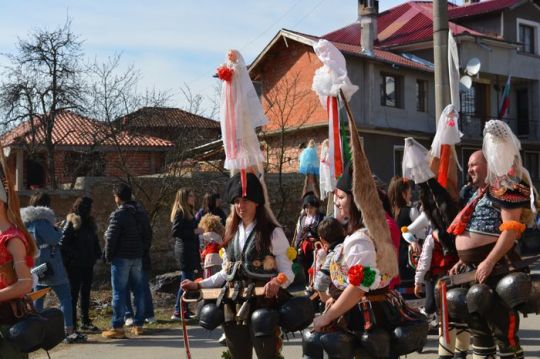
Changing Attitudes Towards the Turk
Decreasing Hostility
As I traversed the tumultuous and scarred landscape of Macedonia, I couldn’t help but notice a shift in sentiments towards the Turks, even among the Bulgarians. The fervent animosity that once characterized their feelings seemed to have cooled in recent years.
Explanation for the Change
The reason behind this change in attitude lies in the fact that the Turks, aside from occasional punitive actions against villages suspected of harboring “brigands,” have largely refrained from violence. This is not due to a fundamental change in their nature but rather because they are aware of the scrutiny they face from European officers tasked with overseeing the reform of the Gendarmerie.
European Oversight
European officers, stationed strategically throughout the region, closely monitor the behavior of the Turkish authorities. British officers oversee Drama, French officers are stationed at Seres, Russians at Salonika, Italians at Monastir, and Austrians at Uskup. With these officers never more than three days’ journey away from any reported incident, the Turks know they are under constant observation Private Tours Balkan.
Improved Behavior
Knowing they are being watched, the Turks have largely refrained from violent actions, leading to a relative calm in the country. The presence of European oversight has served as a deterrent against the excesses and brutality that were once commonplace.
The presence of European officers overseeing the reform of the Gendarmerie has had a profound impact on the behavior of the Turks in Macedonia. While tensions still simmer beneath the surface, the decrease in violence demonstrates the potential for external intervention to mitigate conflict and promote stability in the region.
0 notes
Photo

Controversy Surrounding the Deaths of Two Bashi-Bazouks
Lack of Justification
No substantial reason has emerged to justify the killing of the two Bashi-Bazouks. While it is acknowledged that these individuals belonged to the group responsible for the burning of several villages and arrived with a potentially threatening message, such actions do not warrant their deaths. The circumstances surrounding their killing remain unclear, leaving uncertainty as to whether it transpired during a confrontation or as a calculated act of violence Guided Tours Turkey.
Probable Sequence of Events
It is speculated that the villagers demanded the surrender of the Bashi-Bazouks’ weapons, which was met with refusal, leading to a fatal exchange of gunfire. The villagers believed they were adhering to the directives of Aziz Pacha, who had instructed them to prevent outsiders from entering their village. Subsequently, they notified Aziz Pacha of the incident in their third plea for protection. However, the Turks contest this narrative, alleging that the messenger omitted details of the killings, resulting in his arrest upon the revelation of the truth.
Transmitted Message and Villagers’ Response
Regardless of the messenger’s alleged omission, the villagers openly acknowledged their responsibility for the deaths of the two Bashi-Bazouks. Fearing retaliation from the Bashi-Bazouks, whose atrocities in neighboring villages were well-documented, the villagers initiated defensive preparations. Some opted to flee to Philippopolis and nearby settlements, abandoning their belongings in the process.
The circumstances surrounding the deaths of the two Bashi-Bazouks remain shrouded in ambiguity and conflicting testimonies. While the villagers maintain that they acted in self-defense and sought Aziz Pacha’s guidance, the Turks dispute this account. The absence of a clear motive underscores the chaos and fear pervading the region, prompting desperate measures for survival.
0 notes
Photo

Sultan's Intervention
Upon learning of the remarkable diamond, Grand Vizier Mustafa Pasha expressed interest in purchasing it directly from the Chief Jeweler. However, before he could act, news of the diamond reached the Sultan, who promptly ordered its transfer to the palace. Consequently, the diamond, upon examination, was revealed to be an extraordinary eighty-four carat gem, swiftly seized by the Sultan. As a reward for his role in the acquisition, the Chief Jeweler was elevated to the esteemed position of “Head of the Palace Doorkeepers” and granted several purses of gold.
Historical Accounts
In Komurciiyan’s historical account, reference is made to Gemelli’s narrative from the late 17th century, where it is stated that a diamond found among the ruins of a palace in Egrikapi had come into the possession of Sultan Mehmet, valued at one million koroners. These ruins likely belonged to the Blakerna Palace, described by Robert Clari, a participant in the Latin invasion, as containing magnificent treasures that were looted during the invasion. The mystery of how the Kaşıkçı Diamond survived the plunderers and reappeared centuries later in the dumps remains intriguing Guided Istanbul Tour Whirling Dervishes.
Treasury Records
An important document concerning the Kaşıkçı Diamond can be found in Sultan Mehmet IV’s Treasury register book. The Sultan issued a royal decree for the inventory of items in the Imperial Treasury and a general assessment within the Palace to fund a second campaign against Russia. The register lists various valuable jewelry items, including the “Great Diamond ring” weighing 85 carats, identified as the Kaşıkçı Diamond.
In a more organized register book from Sultan Abdülhamit I’s reign, the diamond is described as the “Great Diamond ring named Kaşıkçı,” weighing 1.85 carats and made of new gold. The entry provides detailed specifications, indicating the meticulous record-keeping practices of the time.
0 notes
Photo
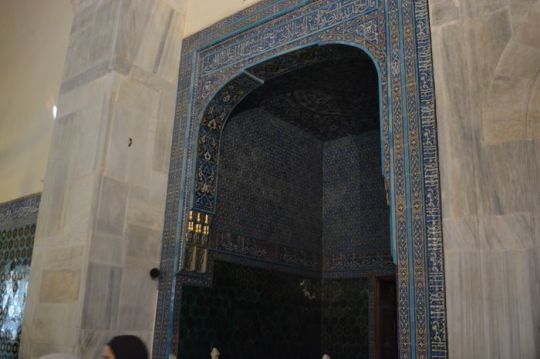
The Young Girl Mockingly Dubbed
The Young Girl Mockingly Dubbed “Queen of the Bulgarians”
The truth behind the mocked “Queen of the Bulgarians” reveals a tale of suffering and resilience.
Misplaced Assumptions
Initially, the imposing figure of the tall woman seemed a likely candidate for the title of Queen. However, it was the delicate, young girl who bore the burden of the cruel epithet, her appearance belying the strength within.
A Fragile Presence
The young girl, with her slender frame barely concealed by tattered garments, exuded an air of vulnerability. Her hazel eyes mirrored the hardship she endured, while her dejected countenance betrayed the weight of her suffering.
Dignity Amidst Desolation
Despite her dire circumstances, the girl displayed a quiet dignity. Clad in borrowed attire after being stripped of her own, she recounted her story with brevity, dispelling the myth of her royal status concocted by her tormentors.
Endurance in Captivity
For two long months, the girl languished in prison, surviving on meager rations of bread and water. Her emaciated appearance spoke volumes about the cruelty inflicted upon her, yet she bore it with stoicism Tour Packages Balkan.
A Promise of Hope
Moved by her plight, Mr. Schuyler offered assurances of assistance, promising to advocate for her release. With words of encouragement, they bid farewell to the young girl, carrying with them the weight of her suffering and the resolve to seek justice on her behalf.
In the humble abode of Philippopolis, the encounter with the “Queen of the Bulgarians” unveils a narrative of endurance amidst adversity. As she awaits liberation from her unjust captivity, her story serves as a poignant reminder of the resilience of the human spirit in the face of tyranny.
0 notes
Photo
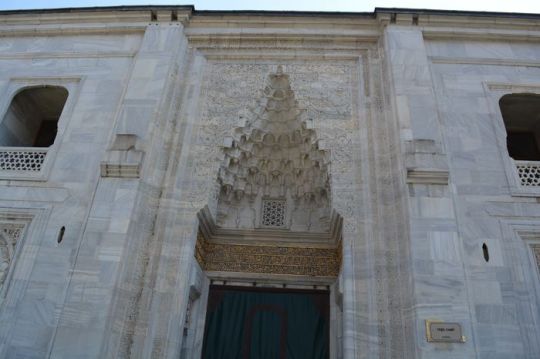
Januarius Aloysius MacGahan A Champion of Justice and Truth
Friendship and Valor in War
After joining the Russian army, Januarius Aloysius MacGahan forged sincere friendships with General Skobelev and General Gurko. He actively participated in all major battles for the liberation of Bulgaria, including the pivotal battles of Plevna and Shipka. His vivid descriptions of these battles stand as remarkable examples of journalism, capturing the intensity and heroism of the struggle for liberation.
Sacrifice and Service
Despite suffering a broken ankle, MacGahan remained steadfastly present at the frontlines throughout the Russo-Turkish War. His unwavering commitment to documenting the realities of war led him to Istanbul, where, exhausted and afflicted with typhoid fever, he passed away on June 9, 1878, at the age of 34. In his untimely death, MacGahan’s destiny became forever linked with the liberation of the Bulgarian people, a cause he served with unwavering dedication Sightseeing Turkey.
Investigating Atrocities
The reports on the April uprising in Bulgaria emerged from a conflict between the British government and the liberal leadership of the “Daily News,” led by Frank Hill, the chief editor. The “Daily News,” renowned for its well-organized foreign service, published a series of letters by correspondent Edween Pears, detailing monstrous atrocities in Bulgaria. These reports stirred doubts among the British public regarding the government’s Balkan policy.
Seeking Truth
To address public concerns and refute government accusations, the editorial board of the “Daily News” launched an inquiry, dispatching Januarius Aloysius MacGahan as a special commissioner to Bulgaria. MacGahan’s impeccable journalistic credentials made him uniquely suited for this mission. Simultaneously, the British government initiated its own official inquiry, led by Sir Henry Elliot and Walter Baring. Additionally, American Minister Maynard tasked General-consul Eugene Schuyler with investigating the atrocities.
Parallel Investigations
MacGahan’s investigation ran parallel to those of Schuyler and Baring. Schuyler and Baring, initially appointed to challenge MacGahan’s accounts, became supportive of his findings. While Schuyler’s report, published on August 28th, corroborated MacGahan’s observations, Baring, guided by a pro-Turkish stance, contradicted his earlier instructions to discredit MacGahan’s reports.
Legacy of Truth
Januarius Aloysius MacGahan’s legacy as a fearless journalist and advocate for justice endures. His courageous reporting and dedication to uncovering the truth about atrocities in Bulgaria not only galvanized public opinion but also reshaped diplomatic discourse. Through his unwavering commitment to truth and justice, MacGahan left an indelible mark on the history of journalism and human rights advocacy.
0 notes
Photo
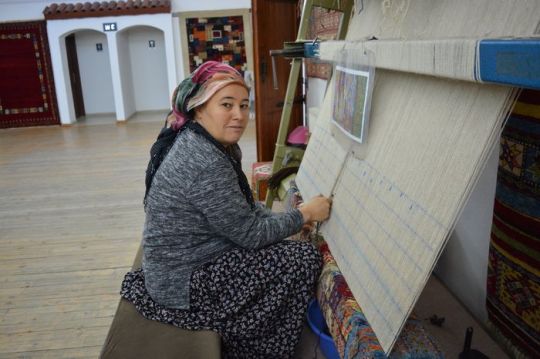
Soviet Interference and Political Developments
General Biryuzov’s Involvement (1945)
General Biryuzov, the Soviet commander, consistently meddled in Bulgarian internal affairs. He insisted on the removal of Dr. G. M. Dimitrov from his role as Secretary General of the Bulgarian Peasant Party. When the request was denied, General Biryuzov ordered the arrest of Dr. Dimitrov. Fifteen years later, in a 1959 article in Rabotnichesko Delo, the Bulgarian Communist Party’s organ, General Biryuzov boasted about his role in Bulgaria’s subjugation and strongly criticized leaders of the Bulgarian Peasant Party, including Dr. G. M. Dimitrov and the late Nicholas Petkov.
Communist Takeover and Lack of Independence (July 1945)
Bulgarian Communist leaders admitted that communism’s establishment in Bulgaria relied on the presence of the Red Army. Under Red Army pressure, the coalition Cabinet formed in September 1944 transformed into a Communist administration by July 1945. This regime was not independent but subservient to the Soviet Union, and it did not represent the free will of the Bulgarian people.
Election Controversy and International Intervention (July-November 1945)
In July 1945, the Soviets announced upcoming elections with only one ticket, the “Fatherland Front” list. Nicholas Petkov, leader of the Peasant Party, requested Allied supervision to ensure free elections following the principles outlined at Yalta. The Bulgarian Communists, without informing Petkov, claimed he had “resigned” as deputy premier. In protest, ministers from the Peasant Party, Social Democrats, and Independent Intellectuals resigned. British and American interventions prompted the Soviets to advise postponing elections and admitting opposition candidates. Petkov was allowed to resume party activities Daily Tours Istanbul.
Broken Agreements and Moscow Conference (November-December 1945)
The Communist-dominated Sofia regime violated agreements by announcing elections on November 18, 1945. Opposition parties boycotted, leading to a single Communist Party-headed candidate list. In December 1945, a Moscow conference of the Three Big Powers addressed Eastern Europe and the Balkans. A compromise solution for Bulgaria was adopted, requiring two opposition party representatives to join the Communist government.
0 notes
Photo

Soviet Interference and Political Developments
General Biryuzov’s Involvement (1945)
General Biryuzov, the Soviet commander, consistently meddled in Bulgarian internal affairs. He insisted on the removal of Dr. G. M. Dimitrov from his role as Secretary General of the Bulgarian Peasant Party. When the request was denied, General Biryuzov ordered the arrest of Dr. Dimitrov. Fifteen years later, in a 1959 article in Rabotnichesko Delo, the Bulgarian Communist Party’s organ, General Biryuzov boasted about his role in Bulgaria’s subjugation and strongly criticized leaders of the Bulgarian Peasant Party, including Dr. G. M. Dimitrov and the late Nicholas Petkov.
Communist Takeover and Lack of Independence (July 1945)
Bulgarian Communist leaders admitted that communism’s establishment in Bulgaria relied on the presence of the Red Army. Under Red Army pressure, the coalition Cabinet formed in September 1944 transformed into a Communist administration by July 1945. This regime was not independent but subservient to the Soviet Union, and it did not represent the free will of the Bulgarian people.
Election Controversy and International Intervention (July-November 1945)
In July 1945, the Soviets announced upcoming elections with only one ticket, the “Fatherland Front” list. Nicholas Petkov, leader of the Peasant Party, requested Allied supervision to ensure free elections following the principles outlined at Yalta. The Bulgarian Communists, without informing Petkov, claimed he had “resigned” as deputy premier. In protest, ministers from the Peasant Party, Social Democrats, and Independent Intellectuals resigned. British and American interventions prompted the Soviets to advise postponing elections and admitting opposition candidates. Petkov was allowed to resume party activities Daily Tours Istanbul.
Broken Agreements and Moscow Conference (November-December 1945)
The Communist-dominated Sofia regime violated agreements by announcing elections on November 18, 1945. Opposition parties boycotted, leading to a single Communist Party-headed candidate list. In December 1945, a Moscow conference of the Three Big Powers addressed Eastern Europe and the Balkans. A compromise solution for Bulgaria was adopted, requiring two opposition party representatives to join the Communist government.
0 notes
Photo
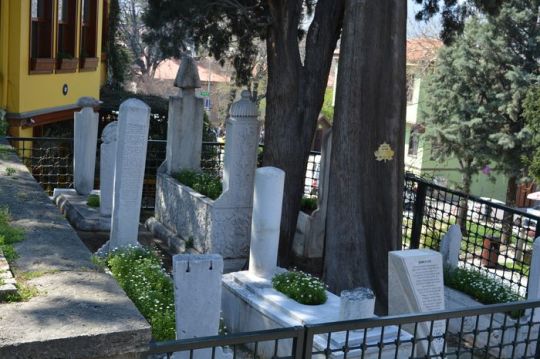
Unraveling the Telegraphed Numbers
Disraeli’s Telegram and the Numbers Game
This article delves into the discrepancies surrounding Mr. Disraeli’s reading of a telegram from Mr. Baring in Parliament. The focus is on the numbers quoted – the villages burnt and the death toll in Bulgaria. The question arises: were these figures a comprehensive overview or a partial representation limited to the Philippopolis district?
A Partial or Complete Account?
The scrutiny begins with an examination of Mr. Baring’s original telegram. While Mr. Disraeli presented it as a broad assessment covering the entirety of Bulgaria, the article raises doubts about whether Mr. Baring intended it as a complete statement or if it was, in fact, a partial snapshot, concentrating solely on the Philippopolis district.
Philippopolis vs. Northern Bulgaria
The article explores the geographical limitations of Mr. Baring’s firsthand observations, emphasizing his visit to the Philippopolis district. It questions the validity of extrapolating these localized findings to the broader context of northern Bulgaria Bulgaria Private Tours. The concern is whether the telegraphed numbers accurately represent the scale of the atrocities across the entire region.
A Critical Assessment
While acknowledging that discrepancies might not be intentional, the article delves into the unintended consequences of presenting partial information as a comprehensive report. It probes whether Mr. Disraeli’s actions, intentional or not, may have contributed to a skewed understanding of the extent of the atrocities in Bulgaria.
Clarifying the Record
The article emphasizes the importance of precision in reporting, especially when dealing with sensitive and distressing events. It calls for a thorough examination of the telegraphed numbers to ascertain whether they were indeed a holistic representation or if there is a need for clarification and correction to present an accurate historical record.
Unraveling the Televised Tale of Tragedy
In conclusion, the article highlights the need for a nuanced understanding of the telegraphed numbers. It underscores the importance of clarifying whether Mr. Baring’s figures were intended to be all-encompassing or region-specific, shedding light on the potential inadvertent misrepresentation that may have influenced historical narratives surrounding the Bulgarian atrocities.
0 notes